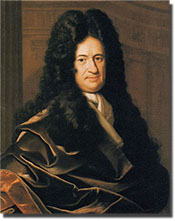Erich I.
|
 |
Duke Eric I. was born in Neustadt on Rübenberg as the second son of duke Wilhelm II. (d. 1503) of Brunswick - Wolfenbüttel. He spent his early years at the courts in Bavaria and Vienna. Because of the close connection to the Austrian court, duke Eric I. served as commander-in-chief for emperor Maximilian I. (1459-1519). In 1494 Heinrich the Elder (1463-1514) and Erich I. divided the inheritance from their father, duke Wilhelm II. of Brunswick - Wolfenbüttel, whereby Heinrich the Elder received the principality of Brunswick - Wolfenbüttel and Erich I. received the principality of Calenberg - Göttingen. But Erich I. temporarily relinquished the government in the principality of Calenberg - Göttingen to his elder brother Heinrich. Erich I. aided emperor Maximilian in the war against the Turks and the French, and he saved the life of the emperor in the battle of Mengersbach at Regensburg in 1504. Duke Erich I. pursued a policy loyal to the emperor and always remained devoted to the Catholic faith. But he could not impede the Reformation in his principality. Erich I. sold religious freedom to the cities of Göttingen, Hanover, and Northeim in 1532. Consequently the empty treasuries in the principality could be filled.
The first marriage of duke Erich I. to the widow of archduke Sigismund of Austria, Katharina of Saxony, remained childless. When Katharina died in 1524 Erich I. married Elisabeth of Brandenburg, who was then just 15 years old. They had three daughters and a long-desired successor, Erich II. (1528-1584). A year later Elisabeth converted to the Protestant faith. She forced Erich I. to burn his lover, Anna Rumschottel, as a witch.
When Duke Erich I. died in 1540, Elisabeth took up the regency for her minor-aged son Erich II. She vigorously promoted the Reformation in the principality. After his death duke Erich I. left behind high debts and two important buildings, the Erichsburg at Dassel and the castle of Calenberg which he had rebuilt.
--Adapted from the website, Die Welfen
![]()
Sources
- Kunze, Wolfgang. In the catalogue for the exhibition, "Leben und Bauten Herzog Erichs II." Neustadt am Rübenberg, 1993.





